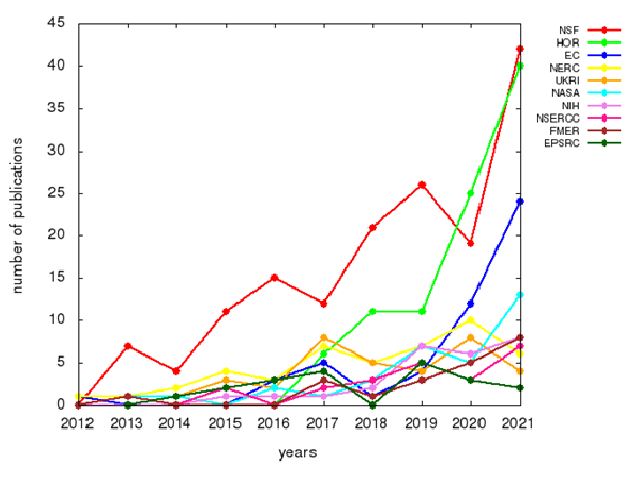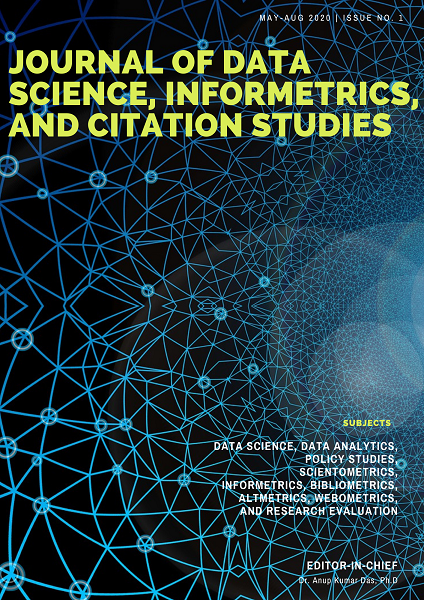Mapping Global Scientific Output on Citizen Science from 2012 to 2021: A Scientometric Analysis
DOI:
https://doi.org/10.5530/jcitation.2.2.10Keywords:
Community science, Science mapping, Research productivity, Highly cited papers, LDA topic modellingAbstract
Citizen Science (CS) methods are gaining importance in the scientific community. We conducted a comprehensive scientometrics analysis of global scientific output on CS. The bibliographic data of 1679 articles published between 2012-2021 were retrieved using the Scopus database. We used the R Bibliometrix, Google Sheets, VOSviewer, and Gensim Python library to analyse and visualise data. The results highlighted an increase in scientific output on CS, with a 40.68% annual average growth rate and a 28.96% exponential growth rate. It revealed that PLoS One was the most significant journal, Callaghan, C.T. was the most prominent author, the USA was the most dominant country, and National Science Foundation was the most acknowledged funder in terms of CS research productivity. The collaboration network analysis demonstrated strong connections between the USA, UK, Australia, and Germany. Therefore, the results showed the applicability of CS methods in the research of “birds distribution,” “biodiversity,” “species classification,” “natural resource management,” and “public engagement.” This paper could be useful for policymakers, researchers, and funding agencies to identify the trend of research, potential collaborators and institutions, areas of research, and opportunities in the field of CS.

Downloads
Published
How to Cite
Issue
Section
License
Copyright (c) 2023 Sourav Mazumder, Dr. Tapan Barui

This work is licensed under a Creative Commons Attribution-NonCommercial-NoDerivatives 4.0 International License.



